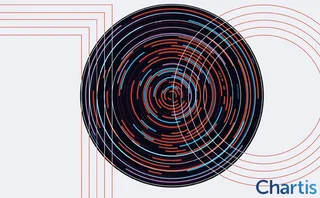
CBOT makes protocol and ticker changes
The Chicago Board of Trade’s (CBOT) new quote vendor network (QVN) has prompted an overhaul of how the exchange distributes data from Dow Jones Indexes (DJI) as well as changes to CBOT’s ticker plant, reports RiskNews' sister publication, Inside Market Data .
Last year’s move to TDI allowed CBOT to process the higher volumes of data that are enabled by the new network. For example, CBOT can broadcast all its and DJI’s data to vendors via user datagram protocol multicast, Spanton says.
DJI will send its data to CBOT via IP rather than in X25 serial format, adds Steve Dickey, vice-president of market data products and information at the exchange.
CBOT and DJI are also changing the distribution protocol for the dissemination of DJI’s index data. Originally, DJI data only had two message types: intra-day messages detailing any movements or changes to the indexes and a daily summary message. In 2001, CBOT split those into six shorter message types to save bandwidth. But with the introduction of the QVN from Radianz, "we don’t have a bandwidth issue anymore", says Jim Sloan, director of indexes technology at DJI.
"Part of the project is bypassing [CBOT’s] input feed handlers... and replacing them with CMS’ software," Sloan says. "The piece of code CBOT developed that converted the two messages into six is being retired and replaced with the CMS solution, which will receive the messages direct."
Vendors have been notified of the changes, which also include the introduction of ISIN numbers in addition to DJI’s own identifiers. They have a 30-day test period, followed by a further 30 days in which the new and old distribution models will run in parallel. But Sloan says DJI will not use the increased bandwidth to drastically expand the data it distributes via CBOT. "Content will [only] increase as it does today when we launch new indexes," which he says total about 20 a year.
CMS had to make some changes to the TDI technology to assign priorities to the eight different primary and backup feeds from DJI to ensure that it recognises markers assigned by DJI to the preferred feed, Spanton says. The software changes are delivered via the Internet and physically installed by CBOT. Subsequent releases of TDI will be able to deploy their own updates, Spanton says.
The changes also required extra hardware to be deployed at CBOT. However, "it runs on basic PC hardware, so that’s very cheap", she says.
Only users who have a paid subscription or are part of a corporate subscription are able to print or copy content.
To access these options, along with all other subscription benefits, please contact info@risk.net or view our subscription options here: http://subscriptions.risk.net/subscribe
You are currently unable to print this content. Please contact info@risk.net to find out more.
You are currently unable to copy this content. Please contact info@risk.net to find out more.
Copyright Infopro Digital Limited. All rights reserved.
As outlined in our terms and conditions, https://www.infopro-digital.com/terms-and-conditions/subscriptions/ (point 2.4), printing is limited to a single copy.
If you would like to purchase additional rights please email info@risk.net
Copyright Infopro Digital Limited. All rights reserved.
You may share this content using our article tools. As outlined in our terms and conditions, https://www.infopro-digital.com/terms-and-conditions/subscriptions/ (clause 2.4), an Authorised User may only make one copy of the materials for their own personal use. You must also comply with the restrictions in clause 2.5.
If you would like to purchase additional rights please email info@risk.net
More on Technology
Dismantling the zeal and the hype: the real GenAI use cases in risk management
Chartis explores the advantages and drawbacks of GenAI applications in risk management – firmly within the well-established and continuously evolving AI landscape
Chartis RiskTech100® 2024
The latest iteration of the Chartis RiskTech100®, a comprehensive independent study of the world’s major players in risk and compliance technology, is acknowledged as the go-to for clear, accurate analysis of the risk technology marketplace. With its…
T+1: complacency before the storm?
This paper, created by WatersTechnology in association with Gresham Technologies, outlines what the move to T+1 (next-day settlement) of broker/dealer-executed trades in the US and Canadian markets means for buy-side and sell-side firms
Empowering risk management with AI
This webinar explores how artificial intelligence (AI) can strip out the overheads and effort of rapidly modelling, monitoring and mitigating risk
Core-Payments for business leaders: why real-time access to payment data is key to long‑term business success
Business leaders require easy access to timely, reliable and complete information across post-trade processes. Aside from the usual requirements of senior managers to optimise for risk, revenues and costs, they increasingly need to demonstrate to their…
Risk applications and the cloud: driving better value and performance from key risk management architecture
Today's financial services organisations are increasingly looking to move their financial risk management applications to the cloud. But, according to a recent survey by Risk.net and SS&C Algorithmics, many risk professionals believe there is room for…
Machine learning models: the validation challenge
Machine learning models are seeing increasing demand across the capital markets spectrum. But how can firms improve their chances of gaining internal and regulatory approval for these type of models?







